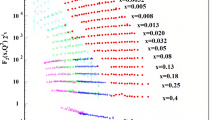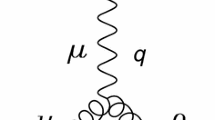Abstract.
The nucleon form factors are calculated using a non-relativistic description in terms of constituent quarks. The emphasis is put on present numerical methods used to solve the three-body problem in order to reliably predict the expected asymptotic behaviour of form factors. Nucleon wave functions obtained in the hyperspherical formalism or employing Faddeev equations have been considered. While a q −8 behaviour is expected at high q for a quark-quark force behaving like 1/r at short distances, it is found that the hypercentral approximation in the hyperspherical formalism leads to a q −7 behaviour. An infinite set of waves would be required to get the correct behaviour. Solutions of the Faddeev equations lead to the q −8 behaviour. The coefficient of the corresponding term, however, depends on the number of partial waves retained in the Faddeev amplitude. The convergence to the asymptotic behaviour has also been studied. Approximate expressions characterizing this one have been derived. From the comparison with the most complete Faddeev calculation, a validity range is inferred for restricted calculations.
Similar content being viewed by others
Author information
Authors and Affiliations
Additional information
Received June 15, 1999; revised March 3, 2000; accepted for publication September 29, 2000
Rights and permissions
About this article
Cite this article
Desplanques, B., Silvestre-Brac, B., Cano, F. et al. Nucleon Form Factors at High q 2 Within Constituent Quark Models. Few-Body Systems 29, 169–222 (2000). https://doi.org/10.1007/s006010070001
Issue Date:
DOI: https://doi.org/10.1007/s006010070001




